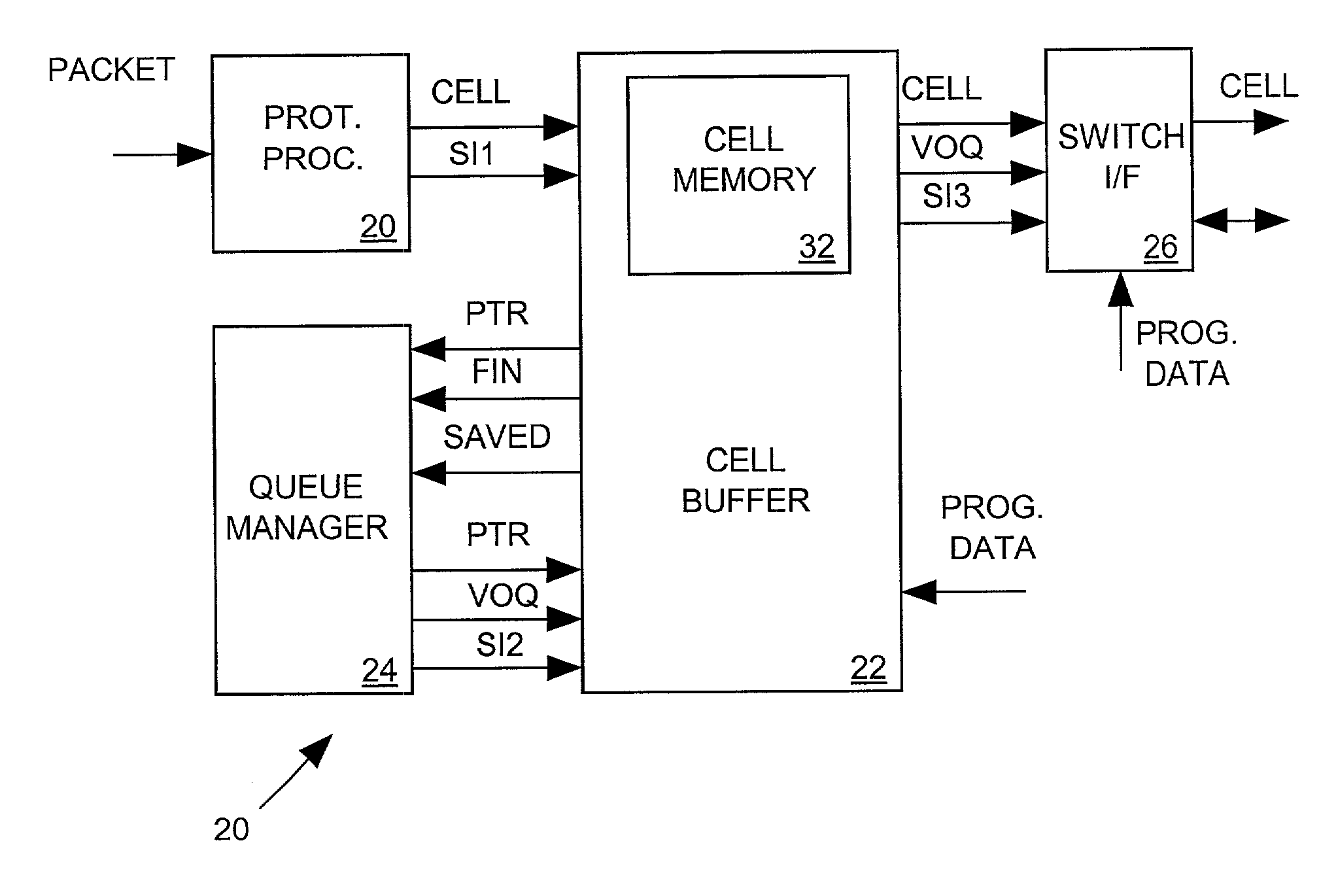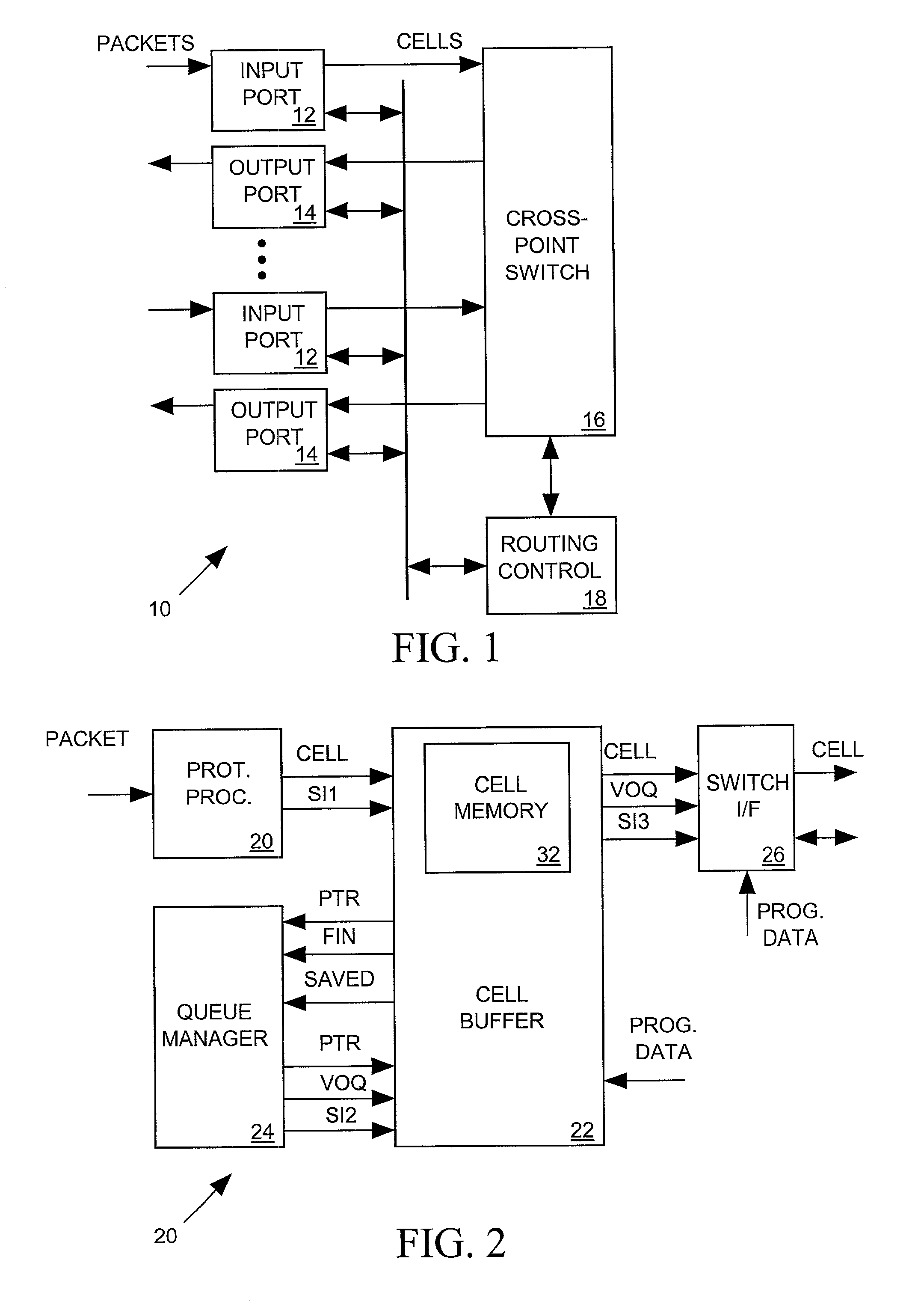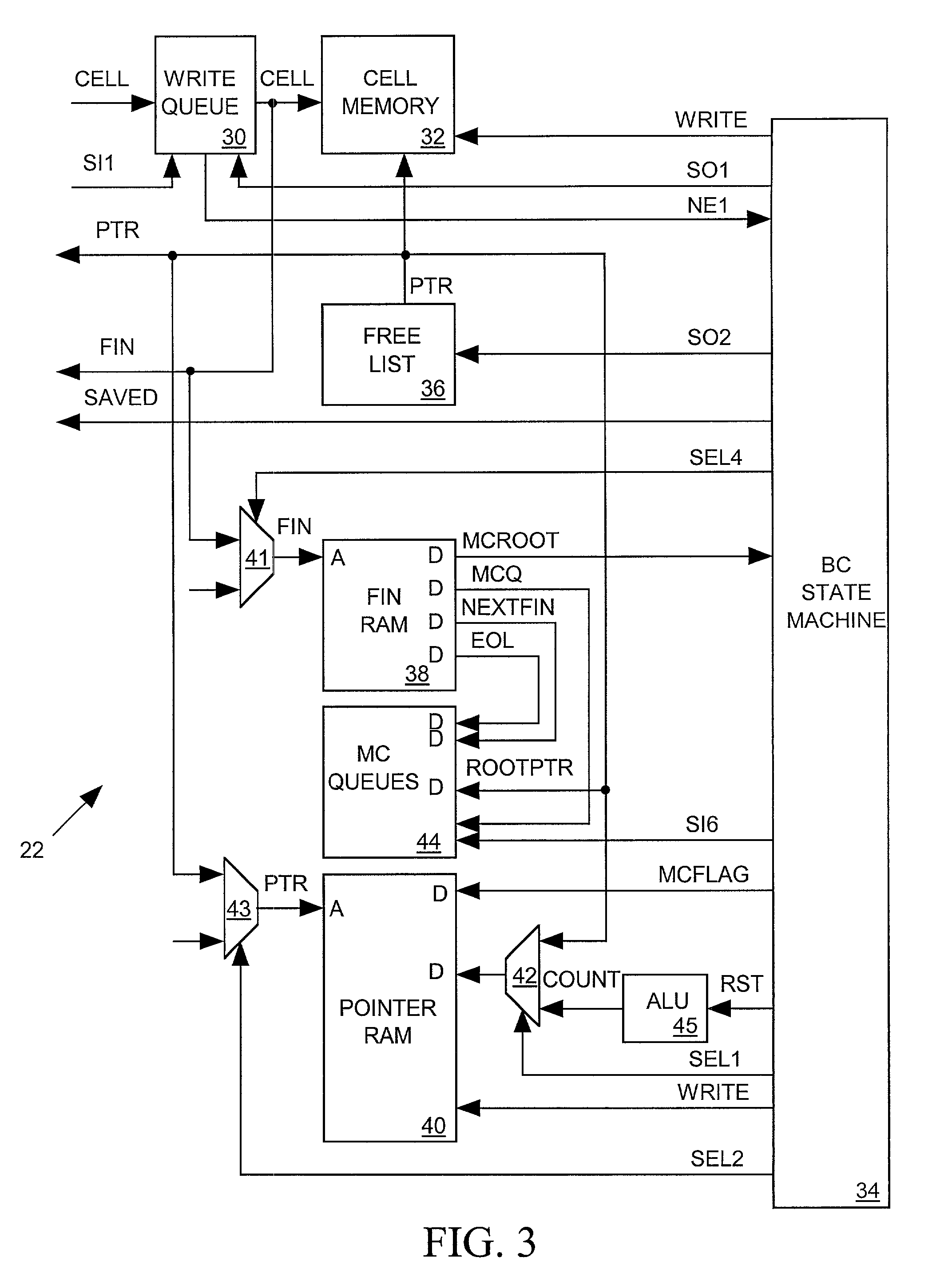Multicast cell buffer for network switch
a network switch and multi-cell technology, applied in the field of network switches, can solve the problems of reducing system throughput, affecting the efficiency of network switching,
- Summary
- Abstract
- Description
- Claims
- Application Information
AI Technical Summary
Benefits of technology
Problems solved by technology
Method used
Image
Examples
Embodiment Construction
[0023]The invention relates to a cell buffer for a network switch which routes network data transmissions such as for example IT, MPLS, ATM or ethernet packets between network buses. The switch receives a packet arriving on a network bus, converts it into a sequence of uniform-sized cells, and then stores cells in a cell buffer. The network switch later reassembles the sequence into the packet and forwards the packet outward on one or more network bus. The network switch forwards each “unicast” packet outward on only a single bus or bus channel while it forwards each “multicast” packet outward on more than one bus or bus channel. The invention relates in particular to the manner in which the cell buffer handles cell sequences derived from multicast packets. The specification herein below describes an example of a network switch that can make use of the cell buffer and describes in detail an exemplary embodiment of a cell buffer considered to be the best mode of practic...
PUM
 Login to View More
Login to View More Abstract
Description
Claims
Application Information
 Login to View More
Login to View More - R&D
- Intellectual Property
- Life Sciences
- Materials
- Tech Scout
- Unparalleled Data Quality
- Higher Quality Content
- 60% Fewer Hallucinations
Browse by: Latest US Patents, China's latest patents, Technical Efficacy Thesaurus, Application Domain, Technology Topic, Popular Technical Reports.
© 2025 PatSnap. All rights reserved.Legal|Privacy policy|Modern Slavery Act Transparency Statement|Sitemap|About US| Contact US: help@patsnap.com



